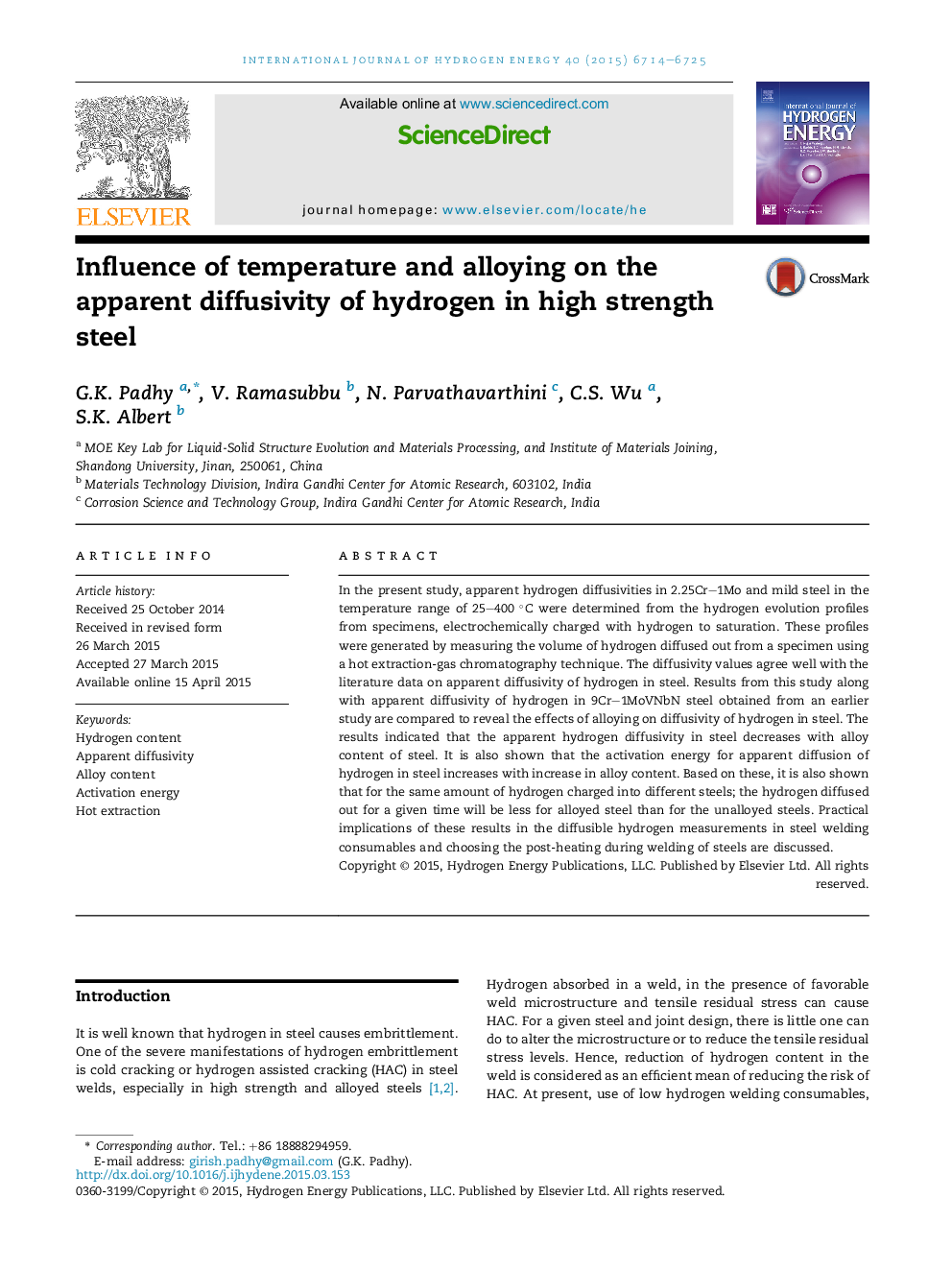| کد مقاله | کد نشریه | سال انتشار | مقاله انگلیسی | نسخه تمام متن |
|---|---|---|---|---|
| 1271467 | 1497453 | 2015 | 12 صفحه PDF | دانلود رایگان |
• Apparent hydrogen diffusivity in structural steel is determined at better accuracy.
• Hydrogen diffusivity increases with temperature and decreases with alloy content.
• Alloying can increase hydrogen cracking susceptibility in steel.
• Higher cracking susceptibility of alloy steel is due to higher remaining hydrogen.
• Hydrogen evolution data can be used to avoid HAC in steel welds.
In the present study, apparent hydrogen diffusivities in 2.25Cr–1Mo and mild steel in the temperature range of 25–400 °C were determined from the hydrogen evolution profiles from specimens, electrochemically charged with hydrogen to saturation. These profiles were generated by measuring the volume of hydrogen diffused out from a specimen using a hot extraction-gas chromatography technique. The diffusivity values agree well with the literature data on apparent diffusivity of hydrogen in steel. Results from this study along with apparent diffusivity of hydrogen in 9Cr–1MoVNbN steel obtained from an earlier study are compared to reveal the effects of alloying on diffusivity of hydrogen in steel. The results indicated that the apparent hydrogen diffusivity in steel decreases with alloy content of steel. It is also shown that the activation energy for apparent diffusion of hydrogen in steel increases with increase in alloy content. Based on these, it is also shown that for the same amount of hydrogen charged into different steels; the hydrogen diffused out for a given time will be less for alloyed steel than for the unalloyed steels. Practical implications of these results in the diffusible hydrogen measurements in steel welding consumables and choosing the post-heating during welding of steels are discussed.
Journal: International Journal of Hydrogen Energy - Volume 40, Issue 20, 1 June 2015, Pages 6714–6725
